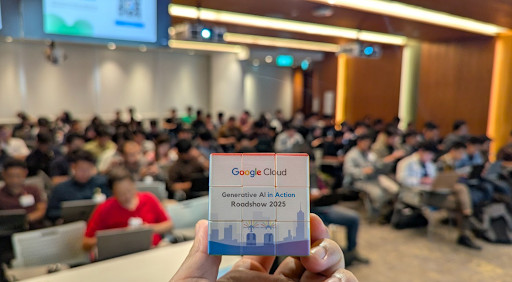More and more organizations are moving to an API-driven architecture. This powerful approach helps them innovate quickly, integrate with best-of-breed external services, and deliver new services faster than ever before.
However, as APIs become increasingly crucial for running a business, it’s critical to provide reliable and consistent service while protecting APIs from misuse or exploitation. An API gateway provides a layer of security and control essential for protecting your data and keeping your APIs highly available. In this blog post, we’ll explore the benefits.
From our partners:
The State of APIs
There is a staggering amount of APIs per organization, driven by the reliance on APIs to support the forever-increasing number of connections between applications, services, and networks, and the demand for real-time data. Even as far back as 2018, Akamai reported that “API calls represent 83 percent of web traffic”.
Organizations are focusing their IT attention – and investment – on APIs, to enable this growth in interconnected applications and to extract the maximum value from data.
Google’s The State of API Economy 2021 Report said: “Looking to the future, our research indicates that businesses plan to increase investments in API programs. Companies report that their key priorities for 2021 include a focus on API security & governance (50%), growth & management of API adoption (41%), investment in building a developer community (38%), generating revenue by monetizing APIs (31%), making more services & data publicly available (31%), and growing their investment in API operations and monitoring (20%).”
There are endless API use-cases across every industry imaginable, but an excellent illustration of the proliferation of APIs is in the Financial and Payments industries. For instance, the adoption of Open Banking in this industry is a global phenomenon fueled by regulatory motion and evolving consumer behavior. Open Banking may help banks and other financial institutions reduce their costs and provide customers with more choices by providing them with real-time access to the banking data. Open Banking frequently results in improved user experiences, including more alternatives and lower prices for consumers, as well as rich data for financial services providers to approve loans based on borrowers’ risk levels quickly. The backbone of Open Banking is secure and reliable APIs interfacing between third-party services and consumer applications.
The API Value Chain
The API Value chain is synonymous with the “Digital Value Chain” – a sequence of transformation processes as a digital assembly line of boundless factories. APIs are the new way to connect different systems, enabling Digital Value Chain, unlocking innovation and monetization.
An API Value Chain, in its simplest form, can be described as having two sides: API Providers and API Consumers.
Let’s look at the actors in the diagram below, which depicts APIs connecting different systems, unlocking innovation and monetization.
Moving from left to right:
- End Users interact with a User Experience. These days this is often a web browser or mobile application.
- Application Developers are API consumers who transform API products into customer-facing applications. In this example, these are “Partner” Application developers and consume external APIs provided by another organization and create value by transforming an API Provider’s data into their products and services.
- API Products are curated APIs accessible for consumption. They are well documented and presumably monetized for consumption.
- API Team is API Owners, API Developers, and broader engineering teams responsible for presenting raw internal APIs into presentable API Products from backend systems. They are responsible for designing and maintaining APIs that are reliable, high performance, and secure.
- Backend Systems are the digital assets comprising data on servers ready to be tapped for value.
API Challenges
While APIs are becoming increasingly popular for sharing data and services, they are getting increasingly complicated, and managing access to these APIs can quickly become a nightmare for API Providers.
Security and Access Control
APIs are conduits to an enterprise’s most valuable digital assets. With the increasing volume of APIs on the web, it’s no surprise that in 2022 APIs have been projected to overtake Web Applications as the #1 attack vector (source: apisecurity.io). It is more critical than ever to have comprehensive protection for your APIs.
The most critical API security risks surround the access controls to expose valuable data. APIs, by their nature, expose valuable data including sensitive information such as Personally Identifiable Information (PII).
Application Logic could also be exposed unintentionally and create vulnerability vectors into your organization. Unauthorized or excessive access can result in data disclosure to unauthorized parties and access to malicious actors’ data exploitation, data manipulation, or complete account takeover.
Reliability and Performance
Satisfying consumers’ appetite for real-time data around the clock demands high-performance applications backed by scalable and highly reliable infrastructure. This means meeting your API consumers’ Service Level Agreements (SLA) in the API Value Chain context.
For instance, to provide the best service tier and access to APIs for high-paying premium customers, Service Level Objectives (SLO) of availability, throughput, response time, or quality must be maintained at the highest level.
Visibility and Governance
As they say, “What you cannot see, you cannot secure.” APIs are the new visibility challenge with how pervasive they are interconnecting services and data, and not surprisingly, most organizations are unaware of their entire API estate or “sprawl.”
Other factors contributing to the sprawl are cloud-native and microservices architectures, continuous software development pushing new API versioning, and classic siloed development challenges.
Many organizations add new APIs and retire old APIs every week, often by multiple teams or sources, so not necessarily complying with governance standards either. Therefore APIs are moving targets, and managing your API estate requires comprehensive visibility and vigilance.
What is API Gateway?
In its most basic form, an API gateway receives an API request and returns an answer, acting as a middle-man or “middleware” between an API consumer and one or many API services. API gateways handle common tasks across a system of API services, such as user authentication, rate limiting, real-time metrics, and more.
The purpose of an API gateway is to provide a consumer-facing facade for hiding the many backend applications in your internal network, which often could be a mixture of application codes and platforms: legacy monolithic applications on virtual machines, or containerized or serverless microservices.
In essence, an API Gateway is the main point of control for managing access to your APIs at scale.
Why do I need an API Gateway?
An API gateway is essential to overcoming the API challenges of security and access, reliability and performance, and visibility and governance.
Without an API gateway, you would need to construct complicated routing rules and write custom code to handle all the various ways consumers and third-party systems might access your API. An API gateway makes accessing your APIs simple while also ensuring that they are secure, dependable, and consistent for all the ways consumed.
Furthermore, a platform-agnostic API gateway will support API access no matter where or how your services are hosted along your transformational journey.
An API Gateway will:
- Defend against Common and Specific API vulnerabilities. API Protection typically comes in the form of Web Application and API Protection (WAAP) Firewall, highly specialized tooling specifically designed to protect web applications and APIs.
- Prevent unauthorized access while allowing only authorized users to gain access to the information they require, with metered and fair-use usage enforcement if necessary.
- Ensure quality of service (QoS) and service level agreements (SLAs). All tiers of consumers (e.g., “Bronze” and “Platinum”) must receive acceptable SLAs by maintaining the highest degree of dependability and performance. Dynamic routing, service health checking, circuit breaking for poor performance or failed services, and much more are needed in an API Gateway.
- Manage access to multiple API versions. As you expand your applications, new APIs will emerge and existing ones will be retired, however, consumers will still want to find all of your services in one place, understand how to use newer versions of an API, and transition to that at their own pace.
- Provide a single entry point for external consumers regardless of the number or makeup of internal microservices. A microservice-based architecture might comprise tens or hundreds of heterogeneous services.
- Provide insights into how your consumers employ your APIs, with real-time analytics and monitoring.
- Manage API monetization strategies with access quotas and billing.
- Facilitate secure internal communication between microservices in service mesh architectures.
Conclusion
As APIs are becoming increasingly critical to running a business, it’s important that they are protected and accessible.
If an API Gateway sounds like something you need in order to keep up with changing technology trends, we’re here to help!
Contact us today about how Snapt Nova can help your organization be more successful in innovating quickly and delivering new services faster than ever before – all without compromising on the protection of your most valuable assets.
Guest post originally published on Snapt’s blog by Armand Sultantono
Source CNCF
For enquiries, product placements, sponsorships, and collaborations, connect with us at [email protected]. We'd love to hear from you!
Our humans need coffee too! Your support is highly appreciated, thank you!








